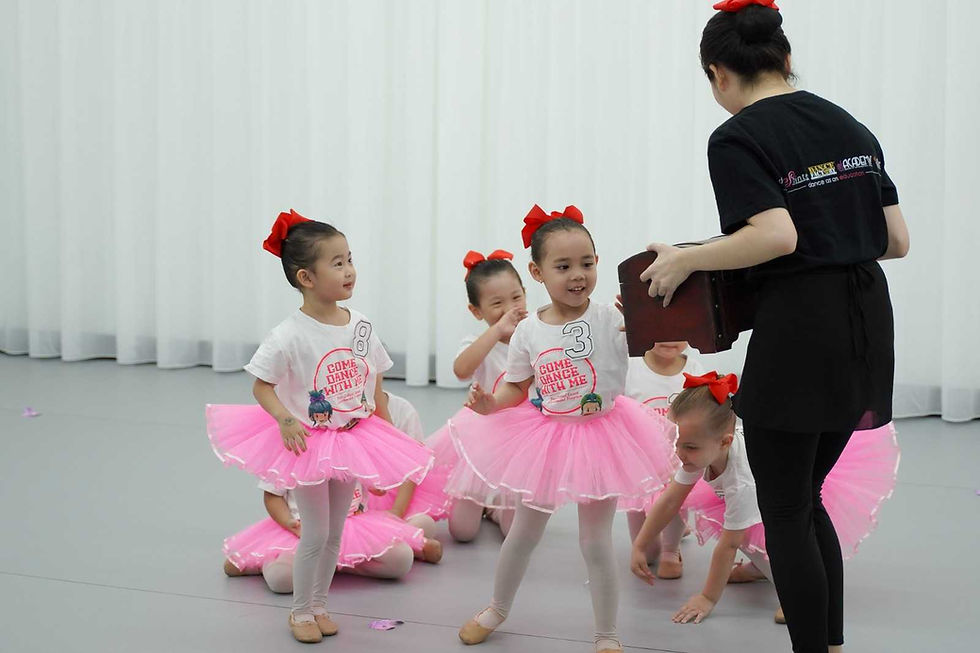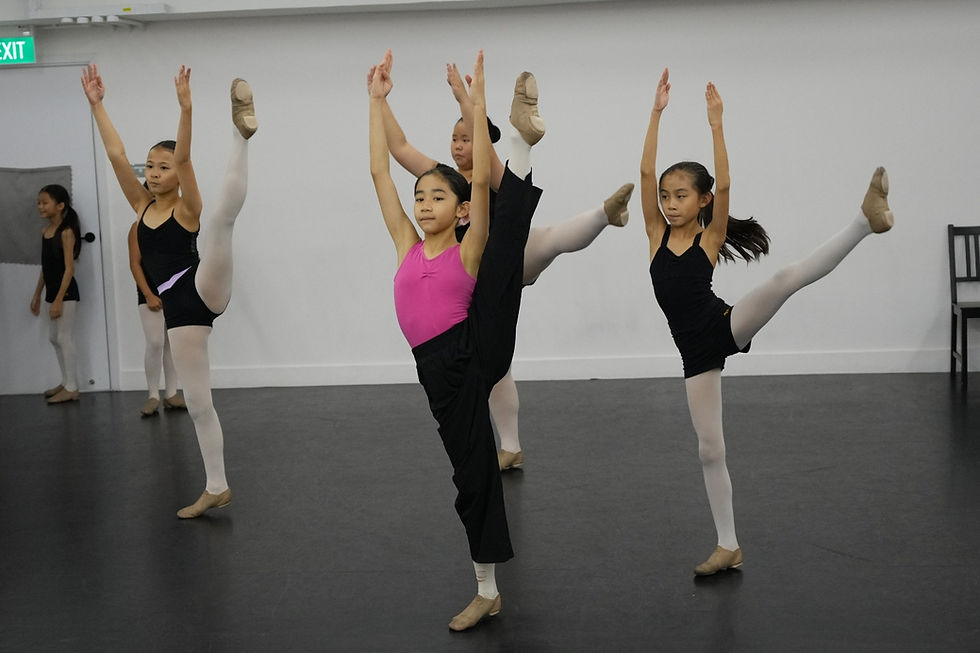A Guide to Ballet Shoes Fitting and Care
- DPA KEC
- Aug 18
- 5 min read

Picture this: you're holding a pair of ballet shoes in your hand, maybe for your child's first dance class. You might feel a mix of excitement and a touch of uncertainty. What should you look for? How should they fit? These aren't just pretty slippers; ballet shoes are vital for a dancer's comfort, technique development, and safety. Let’s explore how to choose the right fit and find out where to buy ballet shoes in Singapore.
The Crucial Role of a Proper Fit
A correctly fitted ballet shoe is the most essential step in preparing your child for their ballet journey. Shoes that are too big will allow the foot to slide around inside, creating tripping hazards and compromising necessary support. This instability can also lead to improper weight distribution, affecting a child's ability to articulate their foot correctly.
Conversely, ballet shoes that are too small can cause immediate pain, blisters, bunions, and even deform the developing foot over time, hindering natural foot development and preventing proper use of the foot muscles.
When seeking a good fit, the shoe should feel snug around the entire foot but without causing any pinching or squashing the toes. There should be no excess fabric or gaping at the toe or sides. The heel should sit firmly in the back of the shoe without slipping up and down. The shoe sole should lie flat against the floor when the child is standing; any bagging or wrinkling under the arch indicates an improper fit.
Types of Ballet Shoes for Young Dancers
As your child embarks on their dance journey, you'll encounter different types of ballet shoes, varying by material and sole construction. Each offers distinct benefits, particularly for young, developing feet in ballet classes.
1. Material Matters
When selecting ballet shoes, the material plays a crucial role in both comfort and durability. Canvas ballet shoes are a popular and often more affordable choice, known for their breathability and flexibility. They tend to mould well to the foot over time, which can be beneficial as children's feet grow quickly; however, it's worth noting that they might stretch slightly with wear.
In contrast, leather ballet shoes are known for their durability and can offer a slightly more supportive feel. They tend to soften with use, conforming to the foot's unique shape to provide a snug, glove-like fit. While the initial cost of leather shoes might be higher, their longevity and durability can balance the expense over time.
2. Sole Support
When it comes to the ballet shoe sole, you'll find two types. Full-sole ballet shoes have a continuous sole that extends from the heel to the toe. These are ideal for beginners and younger dancers, especially in ballet classes for kids. The full sole provides more resistance, which encourages the development of foot strength and articulation by making the foot muscles work harder to achieve a pointed foot.
In contrast, split sole ballet shoes feature two separate sole pads, one under the heel and another under the ball of the foot. This design offers increased flexibility, allowing the dancer to point their foot more fully and showcase the arch. These are generally recommended for more experienced dancers who have already developed sufficient foundational foot and ankle strength through training with full-sole shoes.
3. Ribbons and Elastics
Most ballet shoes come with elastics that are sewn across the arch to keep the shoe securely on the foot. Some styles, particularly for examinations or performances, may also use ribbons which wrap around the ankle, adding aesthetic appeal and extra security. Ensuring these are properly sewn and adjusted helps the shoe fit snugly without restricting movement.
Caring for Your Child's Ballet Shoes
Once you've found the perfect pair of ballet shoes, proper care will extend their life, maintain their shape, and keep them fresh for every ballet dance class.
For canvas ballet shoes, a gentle hand wash with mild soap and cold water is usually sufficient to clean them. Leather shoes should not be submerged in water; instead, wipe them clean with a damp cloth. After cleaning, always emphasise air drying. Keep them away from direct heat sources like radiators or sunlight, as this can cause the material to shrink or become brittle. Proper storage is also key: store them in a breathable bag to help maintain their shape and prevent the build-up of odours.
Knowing when to replace ballet shoes is also crucial for safety and performance. Look for signs of wear and tear, such as holes in the fabric, loss of the shoe’s original shape, or if the sole starts to peel away. Most importantly, regularly check the fit as your child's feet grow. Shoes that were once perfect can quickly become too small, hindering development and causing discomfort. Replacing worn-out or outgrown shoes promptly ensures your child always has the best support for their feet.

The Journey to Pointe Shoes
Among all types of ballet shoes, pointe shoes represent a milestone in a dancer's journey. These are specially constructed satin shoes with a hardened box in the toe, designed to allow dancers to dance on the very tips of their toes.
It's essential to understand that pointe work requires years of rigorous training to build exceptional strength, develop solid technique, and ensure sufficient physical maturity in the dancer's feet, ankles, legs, and core. Forcing a child onto pointe too early, before their bodies are ready, can cause severe and lasting injury.
The decision to begin pointe training rests with the ballet teachers at a dance academy in Singapore. They assess each student's readiness, taking into account their age, physical development, and technical proficiency. This assessment ensures that the transition is safe and beneficial for the dancer.
When the time is right, a professional pointe shoe fitting can be arranged. This fitting differs from a regular ballet shoe fitting. An experienced fitter will ensure the shoe provides optimal support and comfort while allowing for proper movement. For pointe shoe fittings, you can visit Sonata Dancewear or TUTUSG.
Supporting Your Child's Foot Health and Progress
As a parent, your support is vital for your child’s foot health throughout their dance journey.
Firstly, always listen to your child if they complain of foot pain or discomfort, especially with their shoes. Pain signals that something is amiss, and addressing it early can prevent minor issues from becoming major injuries. Regularly check your child's ballet shoes for a good fit as their feet grow.
Alternatively, you can visit Dancepointe Academy’s various branch counters to browse a selection of basic ballet shoes. You can also consult the staff and ballet teachers for advice on ballet attire and overall foot health. They can recommend reputable suppliers for fittings, answer questions about shoe types, and offer advice on maintaining foot health.
Choose the Right Foundation for Their Ballet Journey
Selecting and maintaining the right ballet shoes is a fundamental step in supporting your child's comfort, safety, and technical progress. It’s an investment in their well-being as much as their artistic development. With the right fit and care, their ballet shoes will carry them gracefully through every step, leap, and turn, fostering a lifelong love for dance.
.png)



